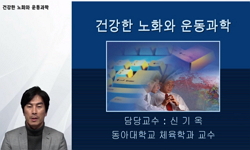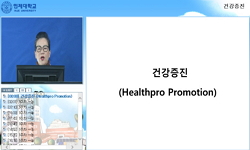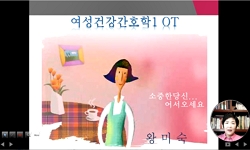조선후기 여성 실학자 빙허각 이씨에 의해 저술된 여성백과대사전인 <규합총서>에는 모발관리법뿐 아니라 모발의 상태를 통해 여성의 貴賤, 吉凶 등의 女性相을 판단하는 내용이 기록...
http://chineseinput.net/에서 pinyin(병음)방식으로 중국어를 변환할 수 있습니다.
변환된 중국어를 복사하여 사용하시면 됩니다.
- 中文 을 입력하시려면 zhongwen을 입력하시고 space를누르시면됩니다.
- 北京 을 입력하시려면 beijing을 입력하시고 space를 누르시면 됩니다.
조선후기 毛髮管理法에 관한 문헌적 고찰 : <閨閤叢書>를 중심으로 = (A) study on the method of hair-care in the late Joseon period
한글로보기https://www.riss.kr/link?id=T11960834
- 저자
-
발행사항
부산 : 東亞大學校 大學院, 2010
-
학위논문사항
학위논문(석사)-- 東亞大學校 大學院 : 衣裳纖維學科 2010. 02
-
발행연도
2010
-
작성언어
한국어
- 주제어
-
KDC
593.2 판사항(5)
-
발행국(도시)
부산
-
기타서명
Focusing on <Gyuhapchongseo>
-
형태사항
ⅳ, 60장 : 챠트 ; 26 cm
-
일반주기명
참고문헌: p. 54-56
- 소장기관
-
0
상세조회 -
0
다운로드
부가정보
국문 초록 (Abstract)
조선후기 여성 실학자 빙허각 이씨에 의해 저술된 여성백과대사전인 <규합총서>에는 모발관리법뿐 아니라 모발의 상태를 통해 여성의 貴賤, 吉凶 등의 女性相을 판단하는 내용이 기록되어 있다.
본 연구에서는 빙허각 이씨의 생애와 <閨閤叢書>에 대하여 알아보고, 이 책에 기록된 모발관리법을 중심으로, 사용된 재료를 발췌하여, 예로부터 전해져온 本草學 및 傳統醫書 등 관련 문헌을 통해 재료가 지닌 藥理的 效能 및 모발관리법, 모발상태에 따른 貴賤, 吉凶을 판단하던 관점과 의의를 고찰, 규명하였다.
<규합총서>에 기록된 모발관리법의 기록을 18-19세기 빙허각 이씨가 생존하던 조선후기 사회상을 비롯해 모발관리를 위해 사용되던 재료적 효능과 모발관리가 필요한 시대적 요구 및 관점을 문헌을 통해 고찰해 본 결과는 다음과 같다.
첫째, <규합총서>를 저술한 빙허각 이씨 생애는 청의 문물을 많이 접하고 이를 조선사회와 실제적 삶에 적용 실천해나가려던 실학자, 고증학자들에 둘러쌓여 성장하였으므로, 그의 진보적 시각 역시 이 저술에 그대로 반영되어 있었다고 본다.
<규합총서>는 저술목적과 의도가 당시 사회를 주도하고 있던 남성이 아닌 여성 독자를 염두에 둔 백과사전으로서, 고대부터 전해진 중국을 비롯한 동양문헌의 다양하고 전문적인 지식이 남성들의 전유물이었다면, 빙허각은 이를 당시 여성들도 전문지식을 쉽게 접할 수 있도록 한글로 기록하였다는 점에서 진보적인 시각이었다고 본다.
빙허각이 영향을 많이 받은 가학과 여자임에도 불구하고 당시에는 보기드물게 그의 총명을 살려준 가문의 사람들로 인해서, 당시 여성들의 주생활이었던 의식주와 관련된 실생활의 지식과 지혜가 학문적으로 정립되었으니, 본 연구의 주 분석대상이 되는 모발 관리법 역시 이의 결실이었다고 본다. 둘째, <규합총서>에 기록된 모발관리법에는 이용후생의 실학사상이 깊이 반영되어 있다고 본다.
모발관리법에 사용된 재료를 보면 주변에서 쉽게 구할 수 있어서 신분과 빈부차이 없이 누구나 쉽게 채취해서 응용할 수 있는 재료로 구성되어 있고, 빙허각의 실제적으로 임상체험을 거치고 검증된 방법을 소개하고 있다.
그뿐 아니라 모발관리법에 소개된 재료인 구기주를 비롯한 기타 모든 재료는 모두 고대부터 각종 의서에 기록된 藥理작용이 강한 재료로서, 주 효능을 보면 解毒․解熱․排毒․血液循環, 頭瘡, 惡瘡, 皮膚病, 부스럼 등에 탁월한 효과가 있고, 이를 바르거나 복용하기도 하였으니, 이상적 모발뿐 아니라 몸을 건강하게 만들어 주는 효능을 가지고 있었으니, 단순히 모발관리법을 뛰어 넘어서 의약학적 지식을 실생활 활용의 실학적으로 접근하고 있음을 볼 수 있었다.
셋째, <규합총서>에 기록된 모발관리법에는 조선후기 사회가 추구하던 북학사상이 깊이 반영되어 있다고 본다.
빙허각의 가문은 연행을 다녀온 자들이 많아 淸 文物에 일찍이 눈을 열고 있었고, 청에서 서적 수입도 많이 해서 조선후기 사회를 대표하는 장서가들이 많았는데, 북학을 적극 수용하던 정조는 조선의 기존 체는 지키되 북학을 용으로 적극 받아들이자는 관점을 가지고 있었으니, 정조의 스승이었던 시조부 서명응은 초대 규장각의 제학을 지내면서 조선후기 북학사상의 사회적 확산과 방향성에 절대적인 영향력을 키쳤고, 중국농서를 바탕으로 조선실정에 맞는 백과사전을 저술한 자로 유명하다.
<규합총서>에서 모발관리법 부분을 보면, 소개된 재료와 방제법이 거의 대부분 관련 내용과 효능이 중국문헌과 일치하고 있고, <규합총서>란 서명도 중국서명을 본받아 지은 것이며, 당시 청에서 유행하던 고증학적 저술태도를 그대로 본받았음을 알 수 있다.
그러나 모발관리법의 재료를 사용하던 방제법을 보면 약간의 차이점을 볼 수 있는데, 빙허각의 저술배경과 태도를 보면 반드시 실제로 체험한 것을, 꼭 소개해야 할 내용만 선별하여 기록하였다고 볼 때, 이는 중국문헌을 참조하였지만 조선실정에 맞는 것만 선별하여 소개했다는 것을 볼 때, 북학을 체가 아닌 용으로 받아들이던 시조부 서명응의 저술태도와 같은 맥락을 보이고 있었다.
넷째, <규합총서>에 기록된 모발관리법과 모발상태에 관한 기록에는 조선 후기 사회가 가지고 있었던 여성에 대한 유교적 관점인 남존여비사상이 잘 반영되어 있었다.
조선후기는 유교가 강화되면서 사회제도 전체가 변화되자 여성생활에도 많은 변화가 있었으니, 제도적 측면에서 여성의 신분이 비하되었던 것은 물론, 결혼한 여성은 가문의 혈통을 잇는 아들 생산이 최고의 업무였다.
따라서 귀천길흉의 구분을 모발상태로 본다는 것은 단순히 관상학적 접근은 아닌 것이, <동의보감>등의 의서에는 인체 내부기관의 건강여부가 모발에 그대로 드러나서, 건강한 모발을 가진 여성이 아들을 잘 낳을 확률이 크다는 관점이 성립되므로, 건강하고 이상적인 모발을 갖기 위하여 동원된 모발관리법은 아름다움에 앞서 건강한 여성상으로 만들기 위함에 그 의의가 더 큰 비중을 두고 있었음을 알 수 있었다.
이상과 같이 <규합총서>에 기록된 모발관리법은 조선후기 사회가 직면하고 있었던 국내외 상황에 따른 정치적․경제적, 이에 따른 가치관의 변화와 깊은 연관성을 가지고 있었으며, 모발관리법이 보기에 아름다운 모발로 변화시키기 보다는 재료가 가진 약리적 작용을 이용해서 건강한 몸을 회복시켜 나가는데 더 큰 의의를 가지고 있음을 알 수 있었다.
다국어 초록 (Multilingual Abstract)
Most dominating the cosmetic market of this country are functional and hair cosmetics. The former goods are used to make the skin finer by giving whitening and wrinkle-free effects. While, the latter are used to make hairs healthier, darker, shinier a...
Most dominating the cosmetic market of this country are functional and hair cosmetics. The former goods are used to make the skin finer by giving whitening and wrinkle-free effects. While, the latter are used to make hairs healthier, darker, shinier and thicker by preventing hair loss and managing hairs and the scalp in a clinical way.
Keeping pace with the trends of well-being, recently, traditional cosmetic methods and materials, which are safe and suitable for body characteristics of Korean people, are being actively researched and developed. Accordingly, cosmetic goods whose main ingredients are from herbs of Oriental medicine, natural, vegetable or fermented are being actually and actively developed.
In this study, this researcher identified materials for hair-care which are described in <Gyuhapchongseo>, an encyclopedia for women written based on the practical science of the late Joseon period. Then the researcher examined pharmacological effects of the materials by reviewing some ancient botanical and medical books, which still remained, and investigated the hair -care method of the late Joseon period and how people of the same period judged others' present social position and fortune of the future in accordance with hair state.
Presumedly, the method of hair Clinic used in the late Joseon period, or 18th and 19th century is closely related with social situations of that time. Findings from the researcher's investigation and analysis of the above mentioned method can be summarized as follows.
First, Bingheogak Lee referred to lots of books published in Ch'ing in writing <Gyhapcheongseo>. For example, Cosmetic materials and the methods and effects of their use which are described in the encylopedia are same as those which are introduced by medicinal prescriptions contained in <Bonchogangmok>, Thus, it can be said that the hair clinic method of the late Joseon period was probably affected by that of the chinese nation.
Fourth, Binheogak Lee wrote <Gyuhapcheongseo> in such way as in documental archeology, While drawing lots of contents from related literatures released in Joseon and Ch'ing, in other words, the author made tests to determine whether the contents were true before publishing them in the encylopedia.
Second, the method of hair Clinic used in the late Joseon period was much influenced by one of the ideologies pursued based on the practical science of that time, or "yiyonghusaeng' which means the promotion of public welfare.
<Gyujhapchongseo> was written in the Korean alphabet, or Hangeul, so it could make even women easily obtain their wanted knowledge. Materials for hair treatment introduced by the encylopedia were things which were easily found and obtained by even grassroots people of the late Joseon period. Those materials were all effective in improving the health of the scalp and the body, indicating that they were chosen according to pursuits by the practical science of that time, especially "yiyonghusaeng".
Third, the fact that in the late Joseon period, women's present social position and fortune of the future were judged based on their hair state suggests that at that time, healthy women were seen as a better candidate of wife. In the late Joseon period, delivering a son who can carry on his family line was the top priority of women. At that time, women who were healthy enough to deliver lots of children, especially son were considered as the best candidate of wife. In the late Joseon period, thus, the use of women's hair state as a primary criteria for their social position and fortune was not a phrenological approach, but a move to determine whether women were healthy or not.
목차 (Table of Contents)
- Ⅰ. 序論 1
- 1. 硏究 目的 및 意義 1
- 2. 硏究의 範圍 및 方法 4
- Ⅱ. 조선후기 시대상과 <규합총서>에 관하여 6
- Ⅰ. 序論 1
- 1. 硏究 目的 및 意義 1
- 2. 硏究의 範圍 및 方法 4
- Ⅱ. 조선후기 시대상과 <규합총서>에 관하여 6
- Ⅲ. <규합총서>와 관련 문헌의 모발관리법 관련 기록 분석 15
- 1. 검은 모발 만드는 모발관리법 관련 기록 15
- 2. 윤택한 모발 만드는 모발관리법 관련 기록 33
- 3. 길고 숱이 많게 만드는 모발관리법 관련 기록 35
- 4. 문헌을 통해 본 모발상태 관련 기록 43
- Ⅳ. 조선후기 문헌에 기록된 모발관리법의 의의 47
- Ⅴ. 結 論 51
- 參考文獻 54
- Abstract 57












